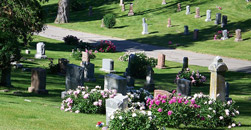Can we use public health models to cure the disease of gun violence?
Oct 25, 2018It is a small piety to bless oneself, a habit to read the notes: “Always Remember,” “Forever in Our Hearts.” They grow overnight, started with a votive candle in a 10-inch glass holder purchased from the bottom shelf at the back of a bodega. One candle is met by another and then another until there are 15 or 20 to arrange in the shape of a heart, or the victim’s initials or the form of a cross, on the sidewalk before the apartment building of the young man who was shot.Acrylic images are painted on the glass, like characters on jelly jars: St. Jude, patron of the hopeless; Lazarus, looking surprised, his shroud unraveling behind him; Mary, her heart pierced; or the Sacred Heart himself, bleeding out in sympathy. Above the candles someone affixes to the brick wall a photo of the handsome young man, smiling or defiant, sweet or trying to look hard, captured at a party or in cap and gown. A story ended. He is honored here for a few weeks, until rain soaks the cardboard someone erected like an awning over the candles and dissolves the poem chalked onto the concrete. But with what seems like inevitability, another little grotto will soon sprout on a nearby corner.AdvertisementThere are the killings that create a low hum month after month, the ones for whom the candles accumulate.There are murders in the United States that make the country stop—briefly—to wring hands and argue about gun laws. These tend to be the killings of many people at once, often in mostly white suburbs. They shock because, however many times we lose our innocence seeing covered bodies in a movie theater or a shopping mall or a schoolyard, we are surprised that these people would be killed.Then there are the other killings, the ones that create a low hum month after month, the ones for whom the candles accumulate.The violent crime rate has declined in major U.S. cities to levels that would have been unimaginable a generation ago, when residents installed multiple door locks and saw heavy traffic at funeral homes—in New...



